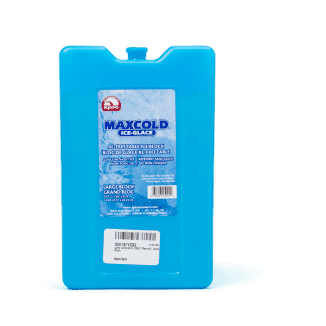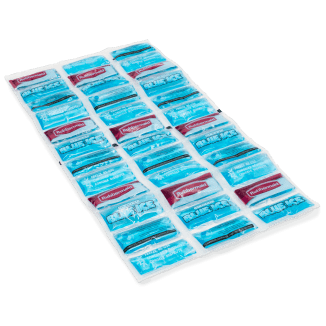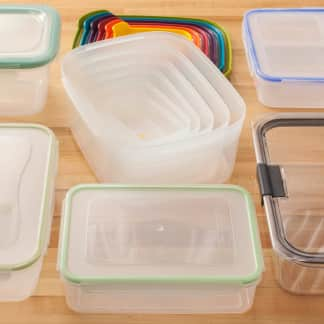Ice packs promise to keep your cooler cold without the hassle and mess of dealing with cubed ice. Most of the packs are filled with nontoxic chemicals, some of which are supposed to stay cold for a prolonged period of time.
To find the best ice pack, we selected eight models. If a manufacturer offered multiple sizes of a product, we chose the largest available. Most of the packs were hard-sided, but we also included two soft-sided ice “blankets” meant to line the bottom of a cooler. Only one product is filled with plain water; the rest use proprietary nontoxic liquids or gels. We froze the packs for 24 hours before each test.
To get a preliminary read on their ability to stay cold, we started by removing the ice packs from the freezer, affixing a thermometer to each, and tracking how long they took to warm from a baseline of about 32 degrees to 50 degrees. With the exception of the two ice blankets, which were both completely thawed in less than 7 hours, all the ice packs stayed below 50 degrees for at least 12 hours. We did find that ice packs that weighed 2 pounds or less called it quits sooner than larger 4- and 5-pound packs.
We saw the same trend when we placed the packs in identical pools of 75-degree water and tracked the temperature of the water as it chilled and ultimately started to warm up again: The smallest ice packs had minimal cooling power, and the ice blankets weren’t much better, but large ice packs worked well, keeping the water cold nearly twice as long (as long as 7 hours) as the others.
Larger Ice Packs Stay Cool Longer
So far only the obvious was clear—larger ice packs stay colder longer. So couldn’t you just use more of the small ice packs to achieve the same result? To find out, we lined the bottom of identical large, 38-quart rolling coolers with as many packs of each model as would fit without overlapping—between one and three packs for each model. We filled another cooler with 5 pounds of loose ice (the smallest amount we could buy at the grocery store) to see how plain ice would compare. We loaded 24 cans of 40-degree seltzer and soda into each cooler so that they were all about half full and tracked the air temperature inside each cooler. Every hour we removed a can from the same spot in each cooler, opened it, and recorded the temperature. Our goal was for the cans to stay under 50 degrees, which we found to be a nice drinkable temperature.

The good news: With size accounted for, every ice pack kept the contents below 50 degrees for more than 8 hours, a reasonable length for a party or tailgate. But we didn’t stop there. The cans in the two coolers with ice blankets warmed up to an unpalatable 60 degrees within 24 hours. All of the coolers with hard-sided packs kept cans around 50 degrees for 36 hours, which is when we finally stopped tracking them. While these results were impressive, we were astounded to find that the clear winner was the plain bagged ice, which brought the drinks down to a frosty 33 degrees and consistently kept them 10 degrees colder than any ice pack over the course of 36 hours—even after a day and a half, sodas in the cooler with plain ice hadn’t even climbed to 40 degrees.
Cooling Medium Does Not Matter
While none of the manufacturers would tell us exactly what materials they used in their ice packs, our science editor explained that common ice pack contents such as hydroxyethyl cellulose, sodium polyacrylate, and silica gel (all nontoxic materials used in other household items from cosmetics to cat litter) perform similarly to water, but they can also prevent bacteria growth. While some also have a thicker, gel-like consistency, which moves slower than water and can prolong thawing a bit, he suggested that the amount of liquid in each pack matters far more than the type.
There was only one way to find out exactly what and how much was inside each pack, so we sliced into each one and emptied the contents. The best-performing ice packs contained more than 45 ounces of cooling medium, about double the amount in smaller packs and up to four times as much as was in the lowest-performing ice blanket. The cooling mediums themselves were all different, ranging from colored watery liquids to clear, thick gels.

To see if any of the cooling mediums were objectively better at chilling than the rest, we weighed out 75 grams of each, put them in identical containers, and froze them. We also included an equal amount of frozen water as a control. The next day, we took the containers out of the freezer and tracked their temperatures as they thawed to room temperature. The result? The liquids stayed pretty close in temperature as they thawed. While we noticed that gels consistently stayed a few degrees colder than liquids, it wasn’t enough to make a marked difference in overall performance. It also came with a trade-off: Air bubbles were often trapped in the slower-moving gels, which formed bulges in the plastic as they froze. Packs with large bumps were unsteady in coolers—no good if you’re transporting something delicate, such as a pie or a tray of deviled eggs.
Plain Ice Works Great, Too
Ultimately, if you don’t mind the cleanup and have time to go to the store, plain ice will do a good job of keeping the contents of your cooler cold (loose ice cubes can snugly surround the contents of a cooler the way rigid ice packs can’t). But if you’re looking for a reusable option that won’t leave your cooler dripping wet, go for a hard-sided ice pack. Though we preferred larger products, all the hard-sided ice packs performed nearly equally once we compensated for size. Since none of the ice packs proved to have superpowered liquids worthy of a splurge, we heavily considered price in our rankings by computing the cost per ounce of liquid for each product. The best ice packs give you more liquid for less money.
The Best Ice Pack
Our favorite was the Arctic Ice Alaskan Series, X-Large, a hard-sided 5-pound ice pack that held the most liquid in our lineup. While its $0.33 per ounce of liquid is a far cry from the $0.04 per ounce of plain ice, this ice pack kept a 38-quart cooler chilly for 14 hours, didn’t form bulges as it froze, had a convenient handle, and can be reused over and over to maximize savings.
The Tests:
- Track temperatures of frozen ice packs as they thaw to room temperature
- Submerge frozen ice packs in room-temperature water and use thermocouples to track water temperature
- Load frozen ice packs into identical 38-quart coolers, fill each cooler with 24 cans of soda, and monitor cooler and soda temperatures for 36 hours
- Cut open ice packs and weigh contents
- Freeze 75 grams of each liquid in identical containers and track how long each takes to reach room temperature
How We Rated:
- Cooling: We tracked the temperatures of the ice packs over three temperature tests; two of the tests used individual packs, while the third used however many packs it took to line a standard cooler. Our favorite products stayed below room temperature for more than 18 hours and kept water and soda chilled at a palatable 50 degrees for more than 6 hours.
- Materials: Our favorite products were made from hard plastic. Lower-ranked products had thin plastic housings that punctured easily. We also docked a few points from products that formed bulges in the plastic as they froze.
- Size: We preferred larger ice packs that could line a chest cooler using only one pack, which meant we had to buy, store, and maintain fewer ice packs for the same cooling results. Lower-ranked products took as many as three packs to line the cooler. We also docked points from products that concealed a small amount of liquid with a lot of bulky packaging, which made adding another ice pack for better cooling results impractical.
- Value: We weighed the liquid in each ice pack and calculated the price paid per ounce of liquid. Products were awarded points if their cost per ounce of liquid was $0.25 or less. We awarded fewer points to products that were more expensive.
- Large size (between 3 and 4 pounds), so only one is needed to optimally cool a 38-quart cooler
- Hard plastic exterior that insulates contents and prevents damage
- Low cost per ounce of cooling medium
- Doesn’t form bulges in the plastic when freezing
- Stays below room temperature for more than 14 hours
- Keeps water below 50 degrees for almost 7 hours when left at room temperature
- Keeps cooler contents below 50 degrees for 36 hours













